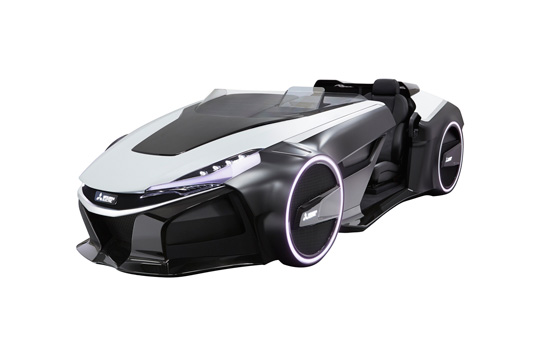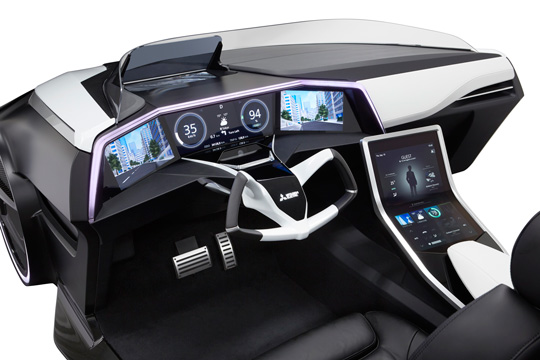News Release Archives
Note that the releases are accurate at the time of publication but may be subject to change without notice.
FOR IMMEDIATE RELEASE No. 2964
Mitsubishi Electric Introduces EMIRAI 3 xDAS Assisted-driving Concept Car
Next-generation driving assistance technology contribute for safer, easier driving
TOKYO, October 8, 2015- Mitsubishi Electric Corporation announced today its EMIRAI 3 xDAS, concept car featuring next-generation driving-assistance technology that promises to enhance the safety and comfort of driving. EMIRAI 3 xDAS will be exhibited during the 44th Tokyo Motor Show 2015 at the Tokyo Big Sight exhibition complex in Tokyo, Japan from October 29 to November 8.

Building on the EMIRAI 2 xDAS, which was introduced at the 2013 Tokyo Motor Show, Mitsubishi Electric has developed the EMIRAI 3 xDAS, with evolved technologies for human machine interface (HMI), driver sensing, telematics, and light control, under the theme of "Feelings come true."

HMI
| (1) | Multi-bonding display
|
||||||||
| (2) | Minimized eye movement
|
||||||||
| (3) | Combiner 3D Head-up display (HUD)
|
||||||||
Driver sensing
| The driver's operating condition is sensed with a camera and a cardiograph that is based on a non-contact cardiograph co-developed with the National University Corporation Kyushu Institute of Technology. The driver's face direction and line of sight are sensed via a camera. | |
| Safe-driving support and predictive assistance based on driver behavior. | |
| Proactive analysis of map data, for example, to identify intersections with poor visibility, and then display side-camera views looking up and down the cross street. Further, the system learns to react automatically whenever the same location/situation is reencountered. |
Telematics
| A cloud-based application analyzes the driver's physical condition by comparing current behavior with past behavioral data stored in the cloud. If fatigue is detected, suitable rest stops are recommended. | |
| Collects and shares information on dangerous locations. Also provides remote control of home appliances. |
Inquiry
Customer Inquiries
Mitsubishi Electric Corporation

